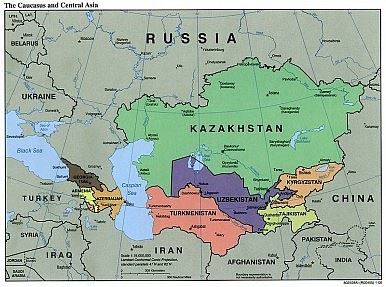USAEE Conference September 23-26, 2018
Pat McMurray
NCAC members helped organize the USAEE Conference in Alexandria, September 23 – 26. It was a privilege to attend this major national conference with professionals from all over the U.S. and many international participants.

Barney Rush, board member of ISO New England, moderated a panel on Electricity Market Design And Operations In Stress that focused on how ISOs/RTOs will maintain reliability as the grid is powered increasingly by gas and renewables. Gordon Van Welie, CEO, ISO New England, said his region is trending toward greater reliability risk in the winter, arising from a risky fuel security profile, that is, a lack of fuel storage and availability in extended periods of firm energy during cold weather. The region will become more dependent on large volumes of LNG. Andy Ott, CEO,PJM, observed that DOE’s NOPR, which would have provided cost recovery for power plants that keep 90 days of fuel onsite, would not have been the right answer to reliability problems. The correct solution, he said, is not to favor coal or nuclear but to price the valuable attributes that can be reliable during periods of any potential fuel scarcity. Thad Hill, CEO, Calpine, said that markets can’t work if government takes more control. The right solution, in his view, is to price carbon.

 Natalie Kempkey, U.S. Energy Information Administration, moderated a session titled U.S. Energy Policy Deep Dive, exploring how to reconcile the nation’s many competing energy goals. Members of her panel were Melanie Kenderdine, Energy Futures Initiative, Linda Gillespie Stuntz, Stuntz, Davis & Staffier, P.C. and Kevin Book, ClearView Energy Partners LLC.
Natalie Kempkey, U.S. Energy Information Administration, moderated a session titled U.S. Energy Policy Deep Dive, exploring how to reconcile the nation’s many competing energy goals. Members of her panel were Melanie Kenderdine, Energy Futures Initiative, Linda Gillespie Stuntz, Stuntz, Davis & Staffier, P.C. and Kevin Book, ClearView Energy Partners LLC.
 Past USAEE President (and past NCAC President) Ben Schlesinger, Benjamin Schlesinger and Associates, LLC, moderated a plenary session on The Battery Revolution. His session featured a lively discussion of how to integrate storage into the grid infrastructure and the potential impact of storage on electricity and natural gas markets. Jason Burwen, Vice President for Policy, Energy Storage Association, reviewed technologies and their benefits. Eric Hittinger, Associate Professor of Public Policy at Rochester Institute of Technology, presented his current research and analysis on battery storage costs and climate benefits and inadvertent costs. The Hon. Marc Korman, Member of the Maryland House of Delegates (D-16), discussed the importance of state-level initiatives to advance storage technologies.
Past USAEE President (and past NCAC President) Ben Schlesinger, Benjamin Schlesinger and Associates, LLC, moderated a plenary session on The Battery Revolution. His session featured a lively discussion of how to integrate storage into the grid infrastructure and the potential impact of storage on electricity and natural gas markets. Jason Burwen, Vice President for Policy, Energy Storage Association, reviewed technologies and their benefits. Eric Hittinger, Associate Professor of Public Policy at Rochester Institute of Technology, presented his current research and analysis on battery storage costs and climate benefits and inadvertent costs. The Hon. Marc Korman, Member of the Maryland House of Delegates (D-16), discussed the importance of state-level initiatives to advance storage technologies.
 NCAC President Michael Ratner, Library of Congress, moderated the Energy and the Environment – Oil & Gas Impacts panels. The student presenters did a good job of explaining their work, sparking an excellent exchange of ideas. All the presenters were innovative in their approach to their topics.
NCAC President Michael Ratner, Library of Congress, moderated the Energy and the Environment – Oil & Gas Impacts panels. The student presenters did a good job of explaining their work, sparking an excellent exchange of ideas. All the presenters were innovative in their approach to their topics.
 Past NCAC President Elaine Levin partnered with past NCAC President Alan Levine to present a workshop on Energy Risk Management: Understanding Hedging, Futures and Option Markets.
Past NCAC President Elaine Levin partnered with past NCAC President Alan Levine to present a workshop on Energy Risk Management: Understanding Hedging, Futures and Option Markets.
 Past USAEE President, past NCAC President, and EIA Administrator 2012-2017 Adam Sieminski was the keynote speaker on the first day of the conference; he noted that energy discussions are usually based on subjective assessments rather than objective data analysis. He emphasized that there should be a preference for evidence-based policy. Circumstances that are viewed as political crises, such as a rise in gas prices, should instead be seen as economic events. Adam currently serves as President of the King Abdullah Petroleum Studies and Research Center (KAPSARC) in Riyadh, Saudi Arabia.
Past USAEE President, past NCAC President, and EIA Administrator 2012-2017 Adam Sieminski was the keynote speaker on the first day of the conference; he noted that energy discussions are usually based on subjective assessments rather than objective data analysis. He emphasized that there should be a preference for evidence-based policy. Circumstances that are viewed as political crises, such as a rise in gas prices, should instead be seen as economic events. Adam currently serves as President of the King Abdullah Petroleum Studies and Research Center (KAPSARC) in Riyadh, Saudi Arabia.
 NCAC member and former EIA Administrator Richard Newell received the prestigious USAEE Adelman-Frankel Award. This award is given to an individual or organization for a unique and innovative contribution to the field of energy economics.
NCAC member and former EIA Administrator Richard Newell received the prestigious USAEE Adelman-Frankel Award. This award is given to an individual or organization for a unique and innovative contribution to the field of energy economics.
The most noticeable feature of this year’s USAEE conference, aside from the very broad range of topics, was the remarkable diversity of the people there. Clearly, energy economics is a discipline that’s relevant to all regions of the world.
Marcellus Shale Technical Tour
Omar Cabrales
 Twenty-three USAEE members participated in the Marcellus Shale Technical Tour that took place immediately after the USAEE conference. The overnight tour was coordinated with the help of Dr. Tim Carr at West Virginia University, and was hosted by Antero Resources.
Twenty-three USAEE members participated in the Marcellus Shale Technical Tour that took place immediately after the USAEE conference. The overnight tour was coordinated with the help of Dr. Tim Carr at West Virginia University, and was hosted by Antero Resources.
 After a thorough safety briefing and overview of Antero's Appalachian operations at Antero's headquarters in Bridgeport, West Virginia, the group went to a production pad in Ritchie County, West Virginia, where a rig was actively drilling the well. At that location, Antero staff spoke about the process of selecting the site, preparing the pad, and conducting the drilling operations. The group had the opportunity to walk around the entire area, learning about the process and equipment on site. The group members directed numerous questions to the Antero staff.
After a thorough safety briefing and overview of Antero's Appalachian operations at Antero's headquarters in Bridgeport, West Virginia, the group went to a production pad in Ritchie County, West Virginia, where a rig was actively drilling the well. At that location, Antero staff spoke about the process of selecting the site, preparing the pad, and conducting the drilling operations. The group had the opportunity to walk around the entire area, learning about the process and equipment on site. The group members directed numerous questions to the Antero staff.
Afterwards the tour went to Antero's Clearwater Facility in Doddridge County, West Virginia, where the company built a water treatment plant that processes flowback water from the oil and gas wells. After processing the flowback water, the plant returns 98% clean, surface discharge quality water, and 2% residual solids. The solids include salt and other contaminants.
The residual solids are sent to a landfill Antero built next to the water treatment facility. The treated water, which meets the standards to be discharged into local rivers or streams, is re-used in the fracking process. The plant has the capacity to produce up to 1.7 million gallons of treated water per day, which reduces Antero's need to draw water from local rivers and streams. In addition to seeing first-hand the various sections of the plant, there was a presentation that thoroughly covered the history and operations at the plant, followed by a long Q&A session.
The last site we visited was Markwest's Sherwood Natural Gas Processing Plant, also in Doddridge County. Because of heavy rain, the group did not leave the bus. The tour bus operator drove through the facility, while Markwest and Antero staff pointed out salient information and discussed the processes taking place. Although not being able to do a walking tour was somewhat disappointing, doing the bus tour gave the group a sense of the scale and rapid expansion that has taken place at the facility, which is currently able to process up to 1.6 Bcfd of production, separating liquids and other valuable petrochemicals from the natural gas stream.
Tour participants were happy and excited about this tour, as it was informative and entertaining. In addition, the long drive to and from West Virginia allowed ample time for the participants to network and learn about each other's areas of focus.
Latin American Energy Resources
Lisa Viscidi
The top oil producing countries in Latin America are all holding elections this year. Lisa Viscidi of the Inter-American Dialogue explains how political changes in Brazil, Colombia, Mexico and Venezuela will affect their oil output, and why it matters for the United States. https://www.csis.org/podcasts/35-west/oil-and-politics-latin-america
Until this year, resource nationalism seemed to be on the wane in Latin America, but presidential hopefuls in Mexico and Brazil campaigned around an increase in state control over the oil and power sectors. In this article for Foreign Policy, Viscidi argues that given resource nationalism’s poor track record in actually benefiting most citizens, it is time for these countries to shift the focus of policy discussions toward addressing today’s more pressing problems. https://foreignpolicy.com/2018/10/16/mexico-and-brazils-crude-politics/
Central Asian Countries May Have To Cooperate For Power Demand Growth
David Givens
 The five nations of central Asia currently have a surplus of power generation capacity but may not be able to keep up with rapid growth in the region, a consultant said at the USAEE/IAEE conference.
The five nations of central Asia currently have a surplus of power generation capacity but may not be able to keep up with rapid growth in the region, a consultant said at the USAEE/IAEE conference.
Malika Siadkhodjaeva, director at G Max Energy Consulting, said combined demand growth has been six percent in the last two or three years in Kazakhstan, Kyrgyzstan, Tajikistan, Turkmenistan and Uzbekistan.
Her presentation showed that the region has a reliable transmission system, but little surplus to send to Pakistan and Afghanistan, where prices are higher.
She said the five central Asian countries are likely to move to a more cooperative power market and be less reliant entirely on their own resources, but will have little excess electricity to export to the south.
The countries have diverse sources of power. Kyrgyzstan and Tajikistan rely mostly on hydro, and Kazakhstan mostly uses coal. Uzbekistan gets most power from natural gas and oil products but has significant solar generation potential, Siadkhodjaeva said. That country may consider adding merchant generation in the future.
The countries generally do not have a regulatory structure that allows them to raise rates paid by customers, so new generation projects often have to rely on financing from regional development banks, she added.
Past NCAC President Elaine Levin authored a blog post and podcast for OPIS (IHS Markit’s Oil Price Information Service). Diesel is the fuel of economic growth, both domestically and abroad, she writes. The diesel prices you pay are influenced by many factors beyond U.S. supply and demand. Levin discusses the volatility currently roiling the market.
Click here for the Blog and Podcast